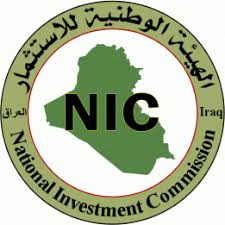Mesopotamia (mostly the present-day Iraq) is rich with archeological sites. Over a million tablets were excavated so far. These were the Mesopotamian’s CDs. Cuneiform scripts are engraved on those tablets, conveying things about every aspect of the Mesopotamian culture. The book, in spite of its title, is neither a pure historical exposition nor a mathematical presentation.
It has a chatting style and entertaining exposition with conjectures, side diversions and fictional stories meant to illustrate ideas presented or to bring home speculations made. Tablets that convey mathematical information reveal a high level of achievements, which the West s overlooks. The math in the book is elementary enough that a high school graduate can follow, but it is of unequal levels. At places, a reader may need a little refreshing of memory. If any reader wishes, he can skip the mathematical formulae with only a minor loss of the story. The book presents several cases of mathematical concepts and methods, attributed today to the Greeks, were in fact originated in Mesopotamia few millennia earlier. The book is sprinkled with fictional stories illustrating how the essential mathematical ideas were discovered in Mesopotamia. One can read how Sargon discovered the notion of tallying. The reader can listen to Nimrod’s dialogue with his assistant discovering the place-value system of numeration, and how the gods whispered in his conscience prohibiting the use of an unambiguous symbol for zero. Thus, he has to leave an empty space to signifying zero. This of is the way Mesopotamians expressed their numbers. However, around 700 BC they dealt with this defect by using an explicit symbol for zero. It is fun, to learn how the Mesopotamians counted by the fingers of both hands in a strange manner. That led to the adoption of sixty as a base for their numeration system. The fictional story of the priest, Theo is interesting. It tells how he proved the theorem known today as Pythagoras theorem, while praying and chanting. It is interesting to read what the people of a future hypothetical country at 4000 AD would think about how backward we are. This story has echoes on the controversial subject whether the Mesopotamians had proved their wonderful results or not. Though the book is mainly about the Mesopotamians mathematical contributions, yet there were quick glimpses into other countries at different epochs to learn mainly how did the people over there treated the mischievous zero. Among those countries was Ancient Greece while undergoing their number-gate, which made turn away from updating their number systems and made them concentrate on geometry and excluding Algebra. Peeping into medieval Europe and find them using the awkward Greek alphabetic numeration system or Roman numerals and refusing to adopt the Arabic numbers by describing them as “infidel numbers”. Most people were not aware of the commandment “Thou shalt not divide by zero.” It was found that the gods punished a mathematician by putting fire on his house because he divided by zero. Mesopotamians were addicted to using math tables, which they had constructed to help perform arithmetic manipulations. They had constructed all kinds of tables for addition, multiplication, inverses, squares, square roots, cubes and exponentiation and more. They used the table of inverses to perform long division; and utilized their tables for solving their practical and math problems, and computing compound interest. A tablet contains the most sophisticated mathematical result yet obtained contains a partial table of Pythagorean triples, which is credited to the Greek Diophantus of the third Century AD, after two thousand years of an unknown Mesopotamian who obtained the list of triples. They made wonderful astronomical observations accumulated centuries-long records concerning motions of stars, without using telescopes. They were able to predict the occurrences of lunar and solar eclipses. .








So primary interesting to explore more and more about such an ancient & contemporary studies and researches which relies on tangable facts which tends to emphasize the significant roots of Iraq’s vital civilization throughout the centuries, and representing it in a form of evidence & authenticity.
I really do love those collection of books and like too much to get deep between its lines and find out what sorts of cognitive fortunes is hidden within its contents, so thanks for your bright website’s address which made that very achievable for us